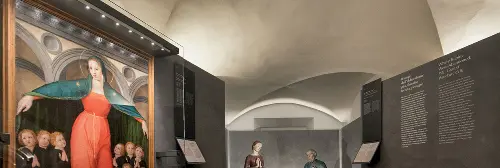
Seamless floors: Express yourself
Versatility & design for flooring from your home to areas of cultural interest.
A brief introduction to the possibilities available for the seamless flooring sector: from the food and drinks sector to heavy industry or the chemical industry, as well as other solutions for the service sector and shopping centres, right up to floor coverings for more intimate and private areas inside the homes we live in. Mapei can play an important part in enabling projects of undeniable cultural and artistic quality and significance to become a reality, by proposing the most suitable solutions in terms of durability, functionality, finish and pattern in compliance with the technical and stylistic constraints specified by the client.
Mapei now has an increasingly large number of solutions available to cover all flooring needs efficiently and quickly: durable, resistant and versatile solutions for any space or room that form part of our normal daily routine.
ONE PRODUCT RANGE, MANY DIFFERENT RESULTS
In the seamless flooring sector in particular, the range of possibilities currently available meets the demands of every product category, thanks to the use of specific floor coverings suitable for use in numerous different types of surroundings: we just have to think of flooring in industrial environments, from the food and drinks sector to heavy industry or the chemical industry, as well as other solutions for the service sector and shopping centres, right up to floor coverings for more intimate and private areas inside the homes we live in.
THE ARTIST’S STYLE REALISED ON SITE
Solutions vary according to their area of use and are categorised by their performance characteristics - smooth or textured surfaces, by the finish or pattern which make them unique. Never identical or repeatable, each solution is a symbol of the compromise between the craftsmanship of the floor layer (these are floors applied skilfully by hand), and the specific requirements of each and every client when creating bespoke surfaces. This is the direction Mapei proposes for renovation work on historical buildings, examples of excellence in the world of art and culture where design is bound by the constraints of conservative restoration, yet there is the desire to break with conventions and to boldly highlight the differences in the effects of the various materials employed.
MATERIALS THAT GIVE THE FREEDOM OF EXPRESSION
And herein lies the choice, right from the very first approach to a design - to diversify the basic themes inherent to the use of the materials, not only according to their performance characteristics and the patterns or finishes governed by the colours and textures to be used, but above all according to themes more in context with the design itself: monochromatic, stripped-down resin systems or cementitious solutions characterised by soft textures and non-uniform pigmentations?
Indeed, for the two reference projects taken as examples and compared on the following pages, the design choices developed in different ways. Not so much because each project, of undeniable cultural quality and importance, involved surroundings with completely different areas of use - the Blaj Cultural Palace on the one hand and the Museum of the Innocenti on the other – but above all for the different approaches taken when tackling them. In fact, in certain cases, it is possible to maintain the old flooring to exalt the expressive differences between the old structure and the new, re-coated seamless surfaces (one of the advantages of applying resin systems is certainly the fact that the layers applied are only a few millimetres thick), allowing designers to highlight, quite clearly and decisively, the stylistic and materic difference between an existing historic structure and the smooth, simple, clean, sober flooring, albeit absolutely functional in view of its final destination as a space to be used by the community.
Completely different, on the other hand, are those designs which aim to achieve more stylistic continuity within the structure and where the search for just the right material leads, for example, to the use of a self-levelling cementitious formulate. In such cases, the use of cementitious mortar strengthens the historical-artistic features of the original structure (such as in the case of the museum presented on the following pages), turning it into a more orderly, silent and intimate environment where visitors perceive a strong sense of reassurance during their visit.
No longer are there clear, separate margins when proposing and choosing a flooring system: areas with the same final use can have their own identity, thanks to the choice of different materials which, for their very nature, are able to make the context perfectly congruent with the initial design choices.
Once again, Mapei can play an important part in enabling projects of undeniable cultural and artistic quality and significance to become a reality, by proposing the most suitable solutions in terms of durability, functionality, finish and pattern in compliance with the technical and stylistic constraints specified by the client.










